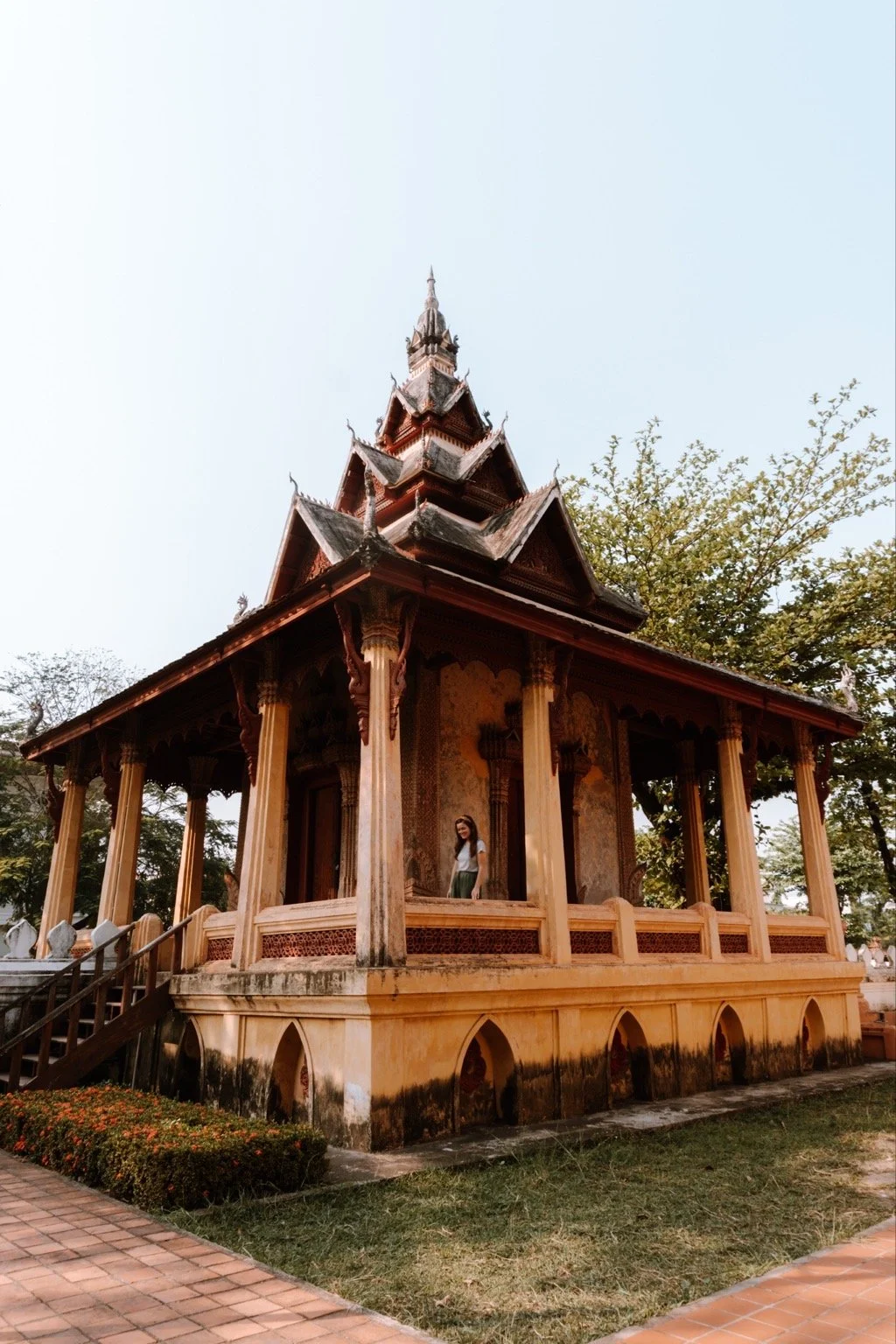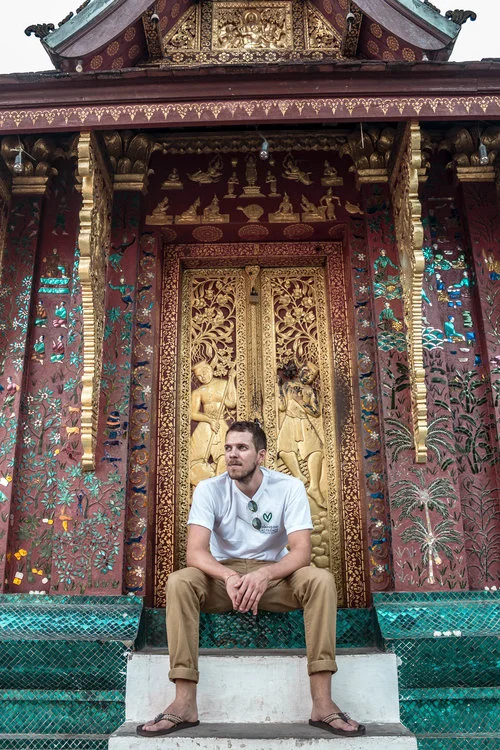how to support minority communities in northern Laos
Laos is home to an estimated 42 ethnic minority communities. Most travelers get glimpses of Khmu, Hmong, and Lao Lum culture, but very rarely do people journey up north where the tinier minority populations reside.
The Akha, Oma, and Lanten people live in small, often isolated communities in northern Laos and hope that tourism, done respectfully and thoughtfully, can help bring awareness of their existence to the rest of the world. It is also through responsible tourism that these kind, culturally rich communities hope to gain further economic opportunities.
During my trip to Luang Namtha Province with Luang Namtha Tourism, I was given the unique opportunity to learn more about these ethnic minority cultures in Laos in an initiative by the tourism board to broaden the economic opportunities of these communities through tourism.
READ ON FOR MORE INFORMATION ON HOW YOUR TOURISM CAN HELP ELEVATE MINORITIES IN NORTHERN LAOS
minority communities of northern Laos ↴
I was absolutely dazzled by the many minorities that make their home in the northern region of Laos. Each tribe we were introduced to had its own identifiable culture thanks to their unique traditions, language, and customs.
KHMU
The Khmu are generally better represented than other smaller minorities in Laos. An estimated 621,000 Khmu people live in the country, making it home to the largest population of the ethnic minority. A majority of Khmu live in very rural areas without electricity. This is partly due to their agricultural heritage.
The Khmu people are indigenous to Laos, and speak Khmu. Their ancestral histories have been passed down from generation to generation verbally, since many have not had the opportunity to learn to read or write. Traditionally, these stories are shared around a fire. Men are the leaders of communities, while women typically take care of the children and prepare meals, which are often eaten communally. Because men are the heads of the communities, they are typically the ones that pass down cultural history.
Like most other tribes, the Khmu earn their livelihood primarily through the growth and harvest of rice, sugar cane, and bananas. They are also skilled at bow hunting and spear fishing, methods they use to this day to provide food for their entire village.
AKHA
Originally descents from China, the Akha people migrated to live in the mountains of northern Laos, northern Thailand, parts of Myanmar, and southern China. Due to the civil wars in Myanmar and Laos, which resulted in their further migration into Thailand, where a large majority of the Akha reside. Still, there are Akha villages in the northern part of Laos that exist, though tiny in numbers. The Akha speak Akha, which is closely related to the language that is spoken in Tibet.
Akha people have very colourful and intricately designed traditional clothing, though it is not usually worn by the younger generation. The leg guards and headdresses are points of pride to the Akha people, and an integral part of their tribe’s identity.
YAO
The Yao people are agrarian people, meaning they are primarily a community of farmers. Typically, the Yao grow and harvest rice crops. However, women in the community are known for being masters of embroidery.
While the Yao have a rich cultural identity rooted in living off the land and creating beautiful crafts inspired by nature, they have a past marked with conflict. The Yao sided with South Vietnam during the Vietnamese War, which earned them favour with the U.S. military, but lead them to immigrate farther north.
LANTEN
The Lanten people migrated to Laos over the last century. After being oppressed by the Chinese government, they came to northern Laos in search of further freedom and land they could own for themselves. There are only 11 Lanten villages in the whole of Laos. The Lanten ethnic group is one of the smallest in the entire country, with an estimated population of 6,500.
Lanten people have developed a written language derivative of ancient Chinese characters. Typically, only the elders in a village can write, and they use this skill to document their cultural stories to be passed on to the next generation.
The Lanten produce cotton cloth, bamboo paper, wooden masks, and silver jewelry. However, they are truly the master of indigo dyeing. In fact, the name Lanten comes from the Chinese word for ‘those who make dye’.
challenges for minority communities in Laos ↴
POVERTY - A lack of economic opportunity exists across the country. Luckily, Laos has halved its poverty rate over the last decade. The quarter of Laotian people who live in what the UNDP call “severe poverty” primarily reside in the isolated northern regions of the nation.
RESTRICTED ACCESS TO HEALTHCARE - Communicable diseases are the number one threat to ethnic minority health. Because many minorities in Laos live in isolated rural areas, their access to proper healthcare facilities is highly limited. Many tribes don’t have a doctor or medicines as we know them in the Western world. Generally speaking, there are healers who practice traditional medicinal practices in the village, however, these methods haven’t proved super effective against contaminated water, lack of sanitation resources, and tuberculosis.
FEW EDUCATIONAL OPPORTUNITIES - While the government mandates school for all children ages 8-15 officially, unofficially there is a national education crisis. Approximately 1/3 of the population is unable to read in Laos. Most villages do have a primary school, but curriculum is often unstandardized and higher-level learning either isn’t encouraged, or doesn’t exist. In rural areas, where children and teenagers are perceived to be more helpful to the community if they contribute to the agricultural labor required, schooling takes a back seat and is not made to be a priority.
PREJUDICE - Certain tribes are viewed negatively due to the complex history of the country. The Hmong, for instance, are often subject to prejudice because of complicated events that occurred during the American/Vietnam War.
responsible travel tips to Laos ↴
You can support minority people in northern Laos in a variety of ways. Here are a few of the easiest:
HANDICRAFT PURCHASES - Buying handicrafts from a fair trade distributor or directly from the often times isolated villages of the crafts origin is a great way to support local artisans. It helps insure that those who made the items are benefiting from their sale.
CAREFUL COFFEE CONSUMPTION - Coffee shops like Saffron Coffee in Luang Prabang source their product from hill tribes in northern Laos. Ethnic hill tribes that once grew opium found a new agricultural venture by way of harvesting coffee and selling it for a fair price. By purchasing coffee that has been grown locally, you cast a vote with your dollar to support continued development in the agricultural sector.
HOMESTAYS OVER HOSTELS - Not only are homestays a great opportunity to experience local culture, they are a wonderful way to support local economies directly. You stay with a local family, instead of being in a chain hotel. You’re able to eat local food, get an authentic feel for life in a village, and your money goes into the pockets of the family you stay with.
RESPONSIBLE TOUR COMPANIES - Booking your trek, kayak, or any other tour activity through an agency that hires local people and pays a fair and livable wage is key in creating economic opportunities for these communities.
Disclaimer: I was a guest, hosted by the Luang Namtha Tourism Board. As always, all opinions are my own and my experience is expressed authentically.







































